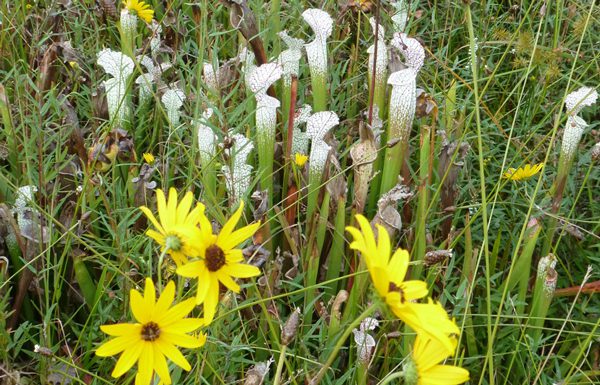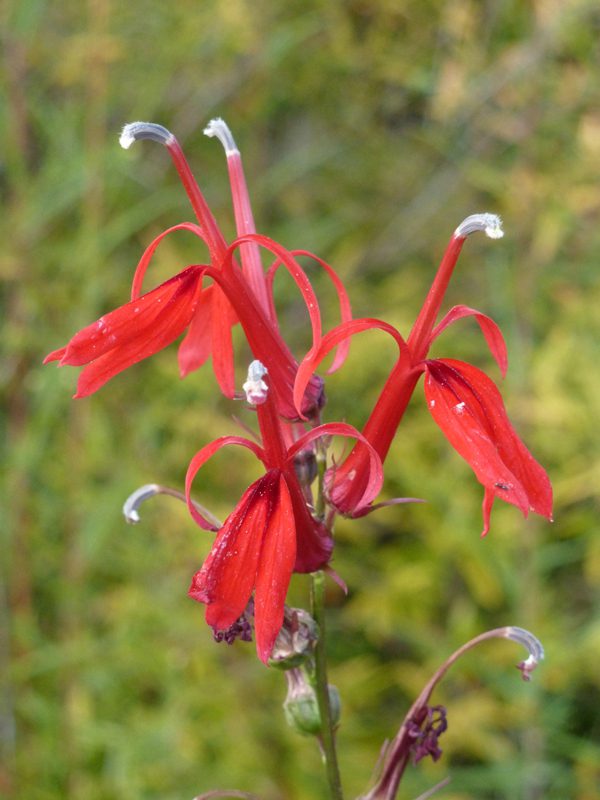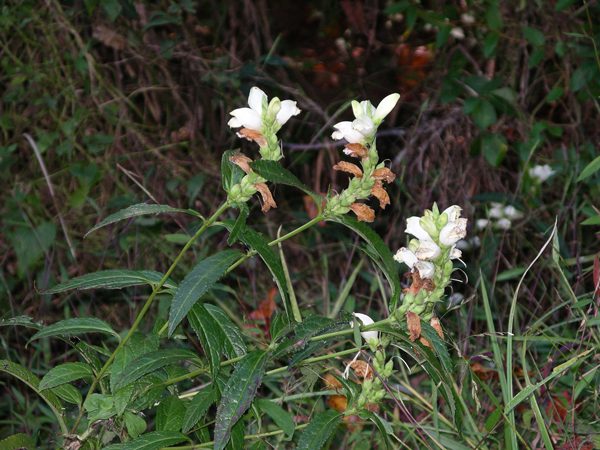Backyard bogs and wetland gardens

After months of steady – and sometimes excessive – rain, we’ve recently seen a more typical pattern of precipitation. Autumn is our driest season. If this trend continues and we don’t receive a soaking from a hurricane or tropical storm, our total precipitation for 2013 could be deceptively average. It’s been a banner year for plants that flourish in soggy conditions.

The Natural Resources Conservation Service (NRCS) defines a wetland as “any area where water covers the soil or keeps it saturated for at least two or three weeks during the growing season.” While some are inundated year-round, others alternate between wet and dry periods, especially during warmer weather. Wetlands come in many different forms. Marshes are dominated by grasses, cattails and other herbaceous plants, while swamps are dominated by trees and shrubs. Wetlands also include natural communities such as bogs, seeps and vernal pools.
Wetlands are crucial to salamanders, frogs and toads during the breeding season, but contrary to popular belief, they’re often inhospitable to mosquitoes. Larvae can’t survive in wetlands that dry up in less than a week during the warmer months or those connected to a pond that supports small fish. Many wetlands in the Uwharries meet these criteria.
While certain plants and animals thrive during periods of heavy or persistent rain, these conditions can be a headache for homeowners preoccupied with keeping basements and crawlspaces dry. In an effort to move water away from dwellings as fast and far as possible, we employ gutters, downspouts, tiles and drains. In cities and towns, the runoff is shunted into sewer systems.
It’s a shame to send a precious resource down the drain. Recent droughts and watering restrictions have inspired some people to install rain barrels then redirect the water to their lawn or garden. Others have established a backyard bog or wetland garden. In addition to creating a habitat that will attract butterflies and birds as well as amphibians, these gardens allow runoff to seep into the soil, filtering out pollutants and recharging the local aquifer. In essence, they do the job of natural wetlands, many of which have been lost or altered due to development.
If the infrastructure is in place to direct the flow away from the house, all that’s needed is a small depression where the water can collect. Outline the shape you want with a hose, then dig a hole with sloping sides one to two feet deep. In rocky areas, line it with sheets of plastic, a preformed liner or a kiddie pool with perforated sides. Heavy clay might not even need a liner. Refill with a mix of soil and peat, water thoroughly, then install native plants adapted to soggy conditions.

Even areas farther from the house can reap the benefits of a bog garden. Establishing one can be as easy as abandoning the effort to grow turf in a soupy section of lawn. You can simply stop mowing and see what emerges from the seed bank or help the process along with a seed mix or container plants. If there’s no naturally occurring wet spot in your yard, you might be able to mimic these conditions by constructing a berm to plug a small ditch.
Before launching into any of these projects, make sure the changes won’t cause flooding on your neighbor’s property, and be careful not to alter an existing wetland. Information about state and local wetland regulations is available through your county Soil and Water Conservation District office (www.ncaswcd.org). For larger projects, consult a hydraulic engineer.
While it’s possible to design a bog garden to meet the cultural needs of novelties such as sundews, Venus flytraps and pitcher plants, it’s easier to create conditions favorable to many of the plants blooming throughout the Uwharries right now. In sunny spots, you can have a colorful assortment of cardinal flower, blue lobelia, ironweed, swamp sunflower, Joe Pye weed and nodding ladies’ tresses. Shady areas tend to support plants that bloom in spring, but the period can be extended into fall with bee balm, jewelweed, sedges, ferns and turtleheads.
With such a dazzling array of plants in a backyard bog or wetland garden, we might even welcome prolonged spells of rainy weather.
The NRCS (www.nrcs.usda.gov/wps/portal/nrcs/detail/national/newsroom/features/?cid=nrcs143_023525) has more information on creating a backyard wetland.
The NC Botanical Garden (www.ncbg.unc.edu/uploads/files/NativePlantsWildflowersEtc.pdf) has a list of native plants suitable for use in wet areas.